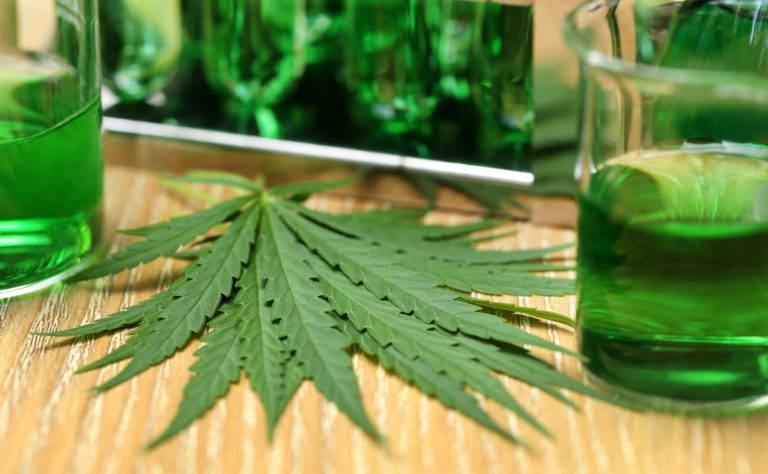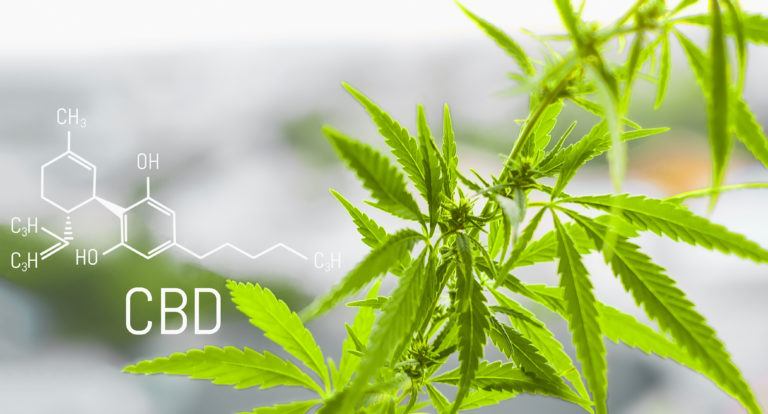WeedLife News Network
CBD Spectrums: Choosing Full-Spectrum, Broad-Spectrum, Or Isolate

It’s a common misconception that all CBD products contain the same hemp-derived ingredients, but in fact there are three major types of CBD products called spectrums. They are full spectrum, broad spectrum or CBD isolate, named based on the hemp-based compounds in the product.
It’s understandable if your head is already spinning. The CBD industry is filled with 1000s of different products . To make things even more confusing, these products are marketed in a variety of different ways — often without consistency from brand to brand.
As a consumer this can make it a challenge to identify the specific hemp-derived content in a product. This is a big deal, as these specifics play a BIG role in the effectiveness and accessibility of CBD. Luckily, a little education goes a long way.
By digging in and identifying the spectrum of a CBD product you’ll be able to make educated shopping decisions. This will help you find the most effective products for your needs while avoiding any potential substances that you don’t want in your products.
Keep reading and we will walk you through the three primary spectrums of CBD products, the advantages and disadvantages of each, how to identify them, and how to pick the right one for your needs.
How is CBD made?
Before we talk about spectrums, it’s important that you understand how CBD makes it into the final product.
It all starts with hemp. This non-psychoactive type of cannabis contains a wide variety of compounds, including cannabidiol or CBD. These valuable compounds include phytocannabinoids and terpenes and are responsible for the health-boosting benefits of CBD oil.
This guide will help you make an educated shopping decision when choosing CBD oil products.
CBD products are made by extracting an oil from the flowering portion of the hemp plant. This crude extract contains cannabinoids, terpenes, fatty acids, and other plant materials.
The processing performed on an extract removes various components from the crude extract along the way. Some processes remove some generally unwanted components like chlorophyll from an extract, while others remove significant cannabis compounds like terpenes and cannabinoids.
Depending on the desired final form, this extract may undergo various processing steps before making it into a product. This is a very simplified explanation, but if you’d like to learn more see Big Sky Botanicals’ article on how CBD is extracted and processed for an in-depth explanation of the topic.
Comparing CBD spectrums
A standard has emerged since hemp was legalized. By looking at a product’s cannabinoid and terpene profile, we can group CBD products into one of three three primary spectrums, based on what remains after extraction:
Full-spectrum CBD
When an extract contains a complete profile of cannabinoids and terpenes in relation to the original plant material, this is called full-spectrum. This type of extract has not undergone any additional processes to alter the presence of these compounds. It is closest to a ‘whole-plant’ product.
It is important to mention that products will contain a trace amount of THC. The content should not exceed 0.3% by weight per the federal regulations established by the 2018 Farm Bill.

You should verify the spectrum of CBD oil products you buy. The best way to do this is to check the third-party lab reports, also known as certificates of analysis or COAs.
As a result, full-spectrum products contain the maximum therapeutic potential when compared to other spectrums. The tiny amount of THC won’t make most consumers ‘feel high,’ but it could still take full advantage of the entourage effect. This is when multiple cannabinoids work together. However, full spectrum products should not be used by those who wish to avoid THC for personal or drug testing reasons.
Identifying full-spectrum CBD: When verifying lab reports for full spectrum products, you’ll find both major and minor cannabinoids present, including THC, as well major and minor terpenes present. The CBD content on the ingredients list comes from an oil source.
Broad-spectrum CBD
Relative to full-spectrum and CBD isolate, broad-spectrum is the newest spectrum on the block. It was made possible by specialized processing called chromatography. This process takes a full-spectrum extract and removes only the THC.
Many compare the effectiveness of broad-spectrum to that of full-spectrum. This is because removing only the THC has a negligible benefit impact while greatly increasing the accessibility of the product to a wider audience that are seeking a THC-free solution.
Identifying broad-spectrum CBD: When verifying lab reports for broad-spectrum products, you’ll find both major and minor cannabinoids present, excluding THC, as well major and minor terpenes present. The CBD content on the ingredients list comes from an oil source.
CBD isolate
The most ‘pharmaceutical’ and furthest from ‘whole-plant’ of the spectrums is CBD isolate. This spectrum is created by distilling a hemp extract. This works by boiling off the and capturing the cannabidiol molecule – isolating it from all the other compounds in the plant.
The result is a white crystalline substance which you’ll find sold as a standalone product or used as an ingredient in products like tinctures and capsules.
Because CBD isolate lacks all other terpene and cannabinoid content, it is relatively the least effective when compared to full or broad-spectrum. It was widely sought after before broad-spectrum came along because of it’s THC-free accessibility.
Identifying CBD Isolate: When verifying lab reports for CBD isolate products, you’ll find only CBD present on a cannabinoid report and no terpenes. The CBD content on the ingredients list comes from a crystalline source.
Always verify the CBD spectrum via third-party lab reports
As you can see, the spectrum plays a BIG role. Unfortunately, not all companies clearly publish the spectrum of their products. For example, some CBD packaging only identifies products as ‘THC-free.’ And some inferior quality products are mislabelled entirely.
That said, regardless of if a company promotes the spectrum of their products or not, you should always, always, always verify the cannabinoid and terpene content via third-party lab reports.
Using the above definitions, look to the labs and ingredients lists for verification on your product contents. If the company doesn’t provide labs, or you can’t easily verify the cannabinoid and terpene content, we suggest you look elsewhere. It’s essential to ensure you know what is in the products you’re taking, and providing these lab reports is expected of quality hemp brands today.
Learning how to read lab reports can be confusing at first, but it’s easy when you get the hang of it. Check out the Big Sky Botanicals’ guide on reading lab reports to learn more. There you’ll also find a section about how to clear up the common confusion around products that are full or broad-spectrum, but the lab reports look like CBD isolate.

Choosing the right CBD oil product doesn’t have to be confusing.
How to choose the right spectrum of CBD oil
Now that you understand the differences between the various spectrums, the final piece of the puzzle is to determine which spectrum to choose. Follow the steps through these primary considerations to determine which spectrum is right for you:
1. Consider THC Exposure
First, and perhaps most importantly, is to consider if you’re able or want to consume THC. In general, we talk to two primary groups of people that want to avoid THC:
Those who are drug tested for THC. This includes workplace screening and others who are screened professionally for marijuana. These tests typically look for the presence of THC. Even though full-spectrum contains at most a trace amount of THC, there are reports of positive drug tests from full spectrum CBD products. Choosing a THC-free alternative is always recommended. Those who don’t want to consume THC. There are many that just simply don’t want to consume THC. This can be due to political, religious, personal or other views. And for a handful of people, even trace amounts of THC can cause grogginess or other unwanted side effects.The topic of drug testing is more complex than we can cover in this guide, which is why we wrote a complete guide to drug testing and CBD on the Big Sky Botanicals website.
If you’re OK with THC exposure, full-spectrum is still in. If you can’t then full-spectrum is out for you.
2. Consider effectiveness via the Entourage Effect
Research shows that whole-plant extracts like broad or full spectrum work well at lower doses and have a broader therapeutic window than CBD isolate. Isolate generally requires higher and more precise doses to be effective.
Because of this, you’re better off with a full or broad-spectrum product over CBD isolate. The effectiveness benefits of these whole-plant products outweighs the misleading low cost that drives CBD isolate sales today.
3. Consider your use case
While it’s pretty clear by now that that full or broad-spectrum should almost always be picked over an isolate, there are cases to look past them.
CBD isolate shines in specialty use cases — namely as a standalone dab product or to be sprinkled on top of marijuana flower to increase CBD potency. In both of these cases the crystalline isolate works well.
Cooking with CBD isolate may be one of the few other exceptions, but a well-made broad or full spectrum CBD product will have a very mild taste and avoid much of the grassy bitterness that can sometimes be bothersome in inferior CBD products.
To sum up, if you find isolate as an ingredient in your a CBD product — like tinctures, capsules, or balm — then look you should probably consider using a full or broad-spectrum alternative.
4. Find your preferred CBD spectrum
Our final piece of advice is to take all of this knowledge and apply it as you shop, but ultimately what works best for you works best for you.
In talking with clients, we find people can react in vastly different ways to the same product. Generally spectrum advice helps, but ultimately finding the product that aligns best with your life is key.
Have you found your preferred CBD spectrum? Let us know in the comments below which you prefer and why!
Copyright
© 420 Intel
When you subscribe to the blog, we will send you an e-mail when there are new updates on the site so you wouldn't miss them.

